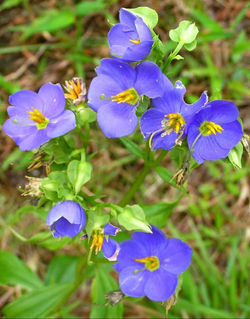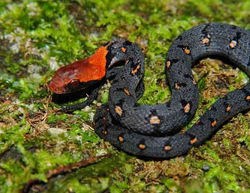
biodiversity of Sri lanka
Since the 1990s, there has been a tremendous surge of taxonomic research on the faunal groups of Sri Lanka. This has led to the discovery and scientific description of many new species of invertebrate and vertebrate fauna. For example, the number of amphibian species recognized in 1957 has undergone a four-fold increase (from 34 to 120 species at present), as a result of the work carried out during the past decade by herpetologists. Several species of reptiles were described during the past decade. Similarly, a swell of research on Sri Lanka’s freshwater crabs has resulted in the discovery of more than 40 new species. It is interesting to note the discovery of new species even among popular groups of vertebrates such as birds (i.e. Serendib scops owl, Otus thilohoffmanii) and mammals (i.e. Sri Lanka pigmy mousedeer, Moschiola kathygre), after a lapse of more than 100 years. A few researchers have begun to focus on lesser-known invertebrates such as insects, moths, spiders, centipedes, millipedes, dragonflies, and land snails in the island, leading to the discovery of new species.
This recent research (especially molecular investigations) also highlights a higher degree of endemism than hitherto estimated among most groups of fauna on the island. Among the inland indigenous vertebrate species (i.e., excluding marine forms and migratory birds) described currently, 45% are endemic to Sri Lanka. A higher percentage of endemism is evident among the freshwater crabs (98%), amphibians (86%), and land snails (85%), with many of them being point endemics (range restricts). Most of these endemic fauna are restricted to the wet zone of the island. Even though Sri Lanka has experienced prolonged and repeated land connections with India during much of the Pleistocene period, recent molecular investigations have revealed a unique endemic insular radiation, especially among the less mobile faunal groups such as tree-frogs and agamid lizards.
The angiosperm flora of Sri Lanka has also been revised during the past three decades. Knowledge about the islands non-angiosperm floras is comparatively poor. Research conducted since the 1980s shows that both diversity and endemism among ferns, bryophytes, and fungi are significantly higher than thought previously. Recent estimates of closed-canopy forest cover in the island range from 22% to 25.7% of the total land area. The protected area (PA) network under the jurisdiction of the Department of Wildlife Conservation (DWC), extends over approximately 13% of the islands land area, under several management categories, from the strictest level of protection in strict nature reserves to national parks where entry is monitored, to sanctuaries which contain both private and state land. The Forest Department (FD) manages a total extent of 10,670 square kilometers of natural habitats (17% of the Islands land area). The existing protected areas include six internationally important wetland sites (Bundala, Anawilundawa, Kumana, Maduganga, Vankalai, and Wilpattu) declared under the RAMSAR Convention on wetlands of International Importance, and four International Man and Biosphere reserves (Sinharaja, Hurulu, Kanneliya, and Bundala) declared under the UNESCO World Heritage Convention.
 Nilgala Butterfly (Endemic) Endangered |  Rhinohorn Lizard (Endemic) Endangered |  Lemon Leg Tiger Spider (Endemic) Endangered |
|---|---|---|
 Painted Stork (Indigenous) |  Venus (Indigenous) |  Wild Buffalo (Indigenous) Vulnerable |
 Spotted Deer (Indigenous) |  Malabar Pied Hornbill (Indigenous) |  Redneck Goby (Endemic) Endangered |
 Burans (Endemic) Vulnerable |  Sri Lanka Elephant (Endemic) Endangered |  Sri Lanka Cuming's Barb (Endemic) Endangered |
 Wild Roseapple (Endemic) Vulnerable |  Marsh Crocodile (Indigenous) |  Dryzone Freshwater Crab (Endemic) Endangered |
 Sri Lankan Chameleon (Indigenous) Endangered |  Sri Lanka Leopard (Indigenous) Endangered |  Chestnut-headed Bee-eater (migrant) |
 Blotch Bowfinger Gecko (Endemic) Vulnerable |  Blue Binara (Edemic) Vulnerable |  Haly’s_Treeskink_(Endemic)_Vulnerable |
 Corrugated Water Frog (Endemic) Vulnerable |  Large Oakblue (Endemic) Vulnerable |  Templeton’s_Kukri_Snake_(Endemic)_Endangered |
 Sri Lanka Star Tortoise (Indigenous) Near Threatened |  Golden Shrub Frog (Endemic) Endangered |  Montane Damselfly (Endemic) Endangered |
 Sloth bear (Indigenous) Endangered |  Sri Lanka Keelback (Endemic) Endangered |  Sri Lanka Frogmouth (Indigenous) |
 Common Ratsnake (Indigenous) |  Glass Translucent Snail (Endemic) Endangered |  Sri Lanka Cherry Barb (Endemic) Endangered |
The region including the Western Ghats and Sri Lanka is considered one of 38 biodiversity hot spots identified in the world. These hotspots are areas that harbour an exceptionally high concentration of endemic species, but have already lost more than 75% of the primary vegetation. Of all the hotspots, the Western Ghats and Sri Lanka hotspot has the highest human population density. While population density in Sri Lanka’s dry zone is 170 km-2, density in the biodiversity-rich southwestern wet zone is 650 km-2. A burgeoning human population in the island has propelled the loss of biodiversity, because of anthropogenic factors such as habitat degradation/modification, over-exploitation of species, the spread of invasive alien species, and pollution.
Vertebrate classes
512 species of birds including 28 endemic species + 5 proposed.
92 species of freshwater fish species including 52 endemic species.
112 of amphibian species including 100 endemic species.
244 of reptile species including 162 endemic species.
124 of mammal species including 22 endemic species.
Invertebrate classes
253 species of Land snails including 205 endemic
118 species of Dragonflies including 48 endemic
248 species of Butterflies including 36 endemic
205 species of Ants including 33 endemic
51 species of Freshwater Crabs including 50 endemic
528 species of Spiders including 277 endemic
Flora classes
3165 species of Angiosperms flora including 900 endemic
